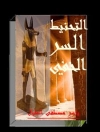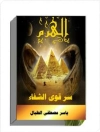An examination of the importance of anchoritism to social, cultural and religious life in the middle ages.
Originating in the deserts of northern Africa in the early years of Christianity, anchoritism, or the enclosed solitary life, gradually metamorphosed into a permanent characteristic of European religiosity; from the twelfth century onwards, and throughout the middle ages, it was embraced with increasing enthusiasm, by devoted laywomen in particular.
This book investigates the wider cultural importance of medieval anchoritism within the different religious landscapes and climates of the period. Drawing upon a range of contemporary gender and spatial theories, it focuses on the gender dynamics of this remarkable way of life, and the material spaces which they generated and within which they operated. As such, it unites related – but too often discrete – areas of scholarship, including early Christian anchoritism, anchoritic guidance texts and associated works, fourteenth and fifteenth-century holy womenwith close anchoritic connections, and a range of other less known works dealing with or connected to the anchoritic life.
Dr LIZ HERBERT MCAVOY is Senior Lecturer in Gender in English and Medieval Studies at Swansea University
Jadual kandungan
Introduction
Miles Christi: Early Anchoritic Masculinity and the Sacred
Videte vocacionem vestram: Late Medieval Male Anchoritism and the Spectral Feminine
Writing the Flesh: Female Anchoritism and the Master Narrative
Reading with the Eyes Closed: Revising the Master Narrative
Mapping the Anchorhold: Anchorites, Borderlands and Liminal Spaces
Afterword
Bibliography
Mengenai Pengarang
LIZ HERBERT MCAVOY FLSW is Professor Emerita of Medieval Literature at Swansea University and Honorary Senior Research Associate at the University of Bristol.












